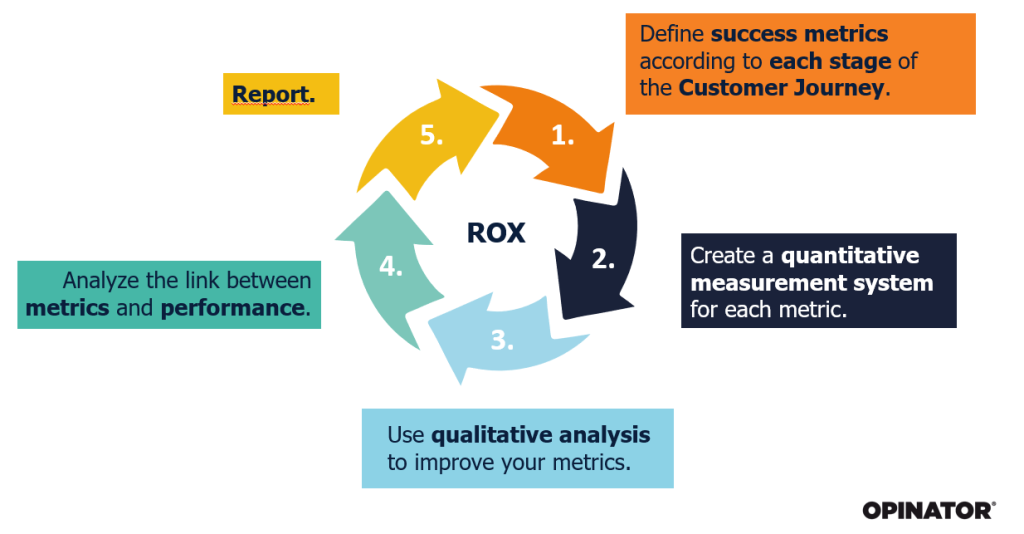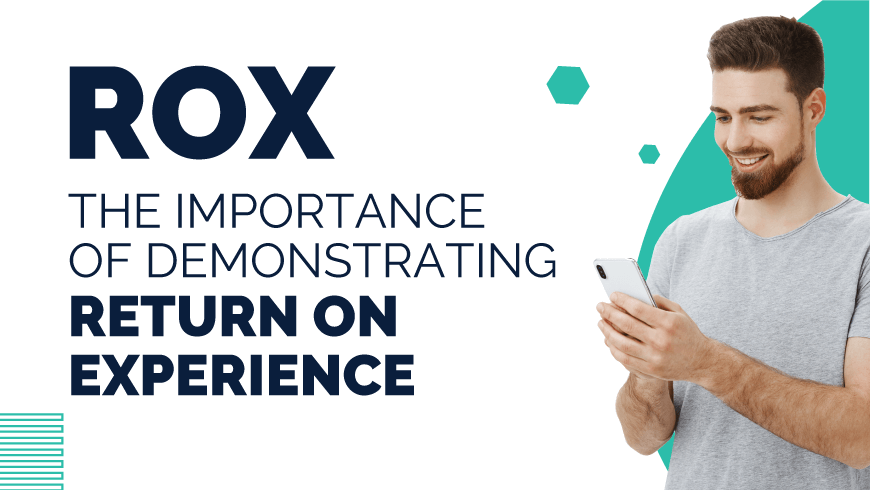What is Return on Experience (ROX) and how to demonstrate it.
While traditional Return on Investment (ROI) focuses solely on financial metrics such as revenue and profit, ROX takes a more holistic approach that takes into account emotional and behavioral outcomes such as customer satisfaction, loyalty, retention and advocacy.
To understand ROX and how it helps us, we first need to understand the challenge that exists:
From all of the above, we can say that we have understood the importance of a customer experience program and how to use this information to improve products and services, but we still have the pending task of having metrics to help us close the gap between the actions taken with the feedback from our customers versus the return on investment.
ROX goes beyond measuring satisfaction or loyalty. It’s not about a CSAT or an NPS or anything like that, but it’s focused on measuring the impact of specific strategies that have been implemented for our customers and what impact those strategies have on a company’s performance.
When we talk about performance, we’re talking about what many people call the bottom line. Is it impacting our core business? What are we achieving?
The first thing we have to do is identify what are the important metrics to measure ROX. And here we find our first challenge. And the important metrics are not the same for everyone, they are unique for each industry, for each company, and they also respond according to the objectives and strategies that each company has.
Steps to measuring your ROX:

1. Define your metrics:
As we have already mentioned above, the first thing to do is to define the key metrics according to the stage of the customer journey. We have already mentioned that for each company the metrics may vary depending on the characteristics of the business, the objectives and the strategy to be followed.
A concrete example: in the acquisition phase, a customer is usually more concerned with ease of purchase, product availability, product variety. In the post-sales phase, the customer is more concerned about the support that will be provided, the speed with which problems will be solved, and so on.
2. Create a quantitative measurement system for each metric:
In this part it is important to account for each metric. For example, if we are measuring ROI, we must be clear if we are going to do it by product, segment, experience, region, etc.
3. Do a qualitative analysis to identify how to improve those metrics:
Analyze the reasons for the return you are measuring quantitatively and add a contextual variable that nurtures the data and helps it explain itself.
4. Analyze the relationship between metrics and performance:
Analyze the reasons for the return you are measuring quantitatively and add a contextual variable that nurtures the data and helps it explain itself.
5. Report, draw conclusions and improve:
Finally we report and use this report as an improvement input to then go back to the first stage and adjust or redefine metrics again and restart the analysis cycle.
In short, how do we improve our ROX?
Create personalized experiences for each of your customers through contextual surveys capable of adapting to all formats and touch points.
At OPINATOR we call these surveys OPIs. Actually an OPI is more than a simple survey, it is a way to generate exceptional interactions and capable of being at every touch point, to adapt to each person, to each context and to generate real-time analysis through advanced dashboards.
Implement a real-time system to be able to act on feedback to improve and monetize your customers’ experience.
And finally, measure and report on the ENTIRE customer journey in a timely and contextual manner.

